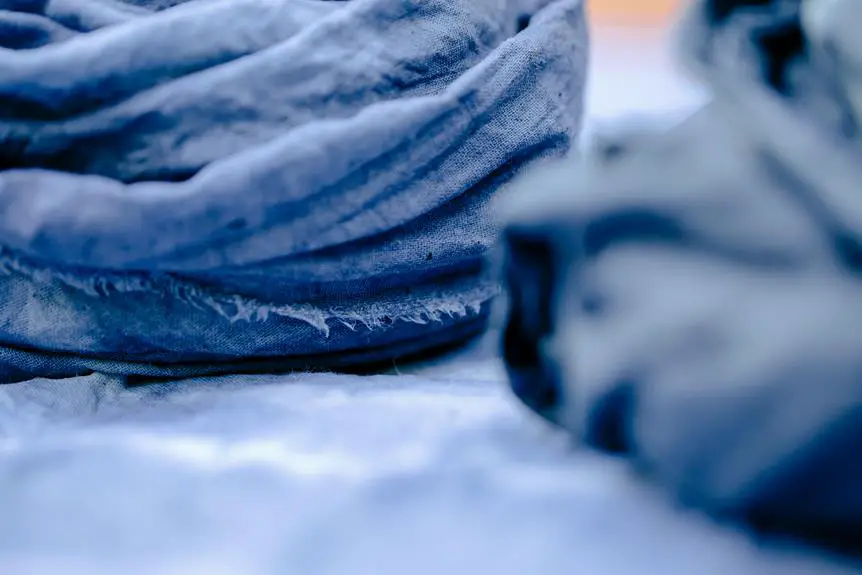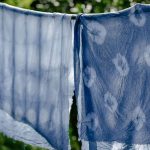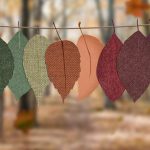When you're looking to dye jacquard fabric, it's essential to start with a clean slate. You'll want to wash the fabric thoroughly to remove any impurities that could affect the dye's adherence. Once you've done that, choosing the right dye is crucial, especially since jacquard can be made from various fibers. But the dyeing process itself involves more than just mixing colors; there are specific steps you need to follow to achieve an even, vibrant result. Understanding these nuances can make all the difference in your project's success.
Table of Contents
Understanding Jacquard Fabric
Jacquard fabric is a distinct textile known for its intricate patterns and textures, woven using a special loom that allows for detailed designs. This fabric is typically made from cotton, silk, or synthetic fibers, and its unique construction gives it a luxurious feel. When you touch Jacquard, you can immediately sense the quality and craftsmanship behind it.
The weaving technique used in Jacquard fabric enables you to create complex images and motifs, making it a popular choice for upholstery, curtains, and fashion items. You'll often see Jacquard in home décor, where its elegance can elevate any space. The weight and structure of the fabric also contribute to its durability, ensuring that it withstands wear while maintaining its beauty.
Understanding the properties of Jacquard fabric is crucial before you start the dyeing process. Its texture can absorb dyes differently, which means you'll need to consider how the patterns will interact with the colors you choose.
Familiarizing yourself with its characteristics will help you achieve the desired outcome, allowing your creativity to shine through in your projects.
Choosing the Right Dye
Selecting the right dye is essential for achieving vibrant colors and maintaining the integrity of your Jacquard fabric. When you're choosing dye, consider the fiber content of your fabric. Jacquard can be made from various materials like cotton, silk, or polyester, and each requires a specific type of dye.
For natural fibers, fiber-reactive dyes or direct dyes work best. If your fabric is synthetic, you'll need acid dyes or disperse dyes.
Next, think about the desired color intensity and permanence. If you want bright colors that last, opt for high-quality dyes specifically designed for your fabric type. Read the manufacturer's instructions to ensure compatibility and effectiveness.
Don't forget to test the dye on a small swatch first. This step will help you gauge how the color will turn out on your Jacquard fabric and ensure you're happy with the results before committing to the entire piece.
Also, consider whether you want to dye the fabric all one color or use techniques like tie-dye or ombre for added visual interest. By carefully selecting your dye, you'll set the stage for a successful and beautiful outcome.
Preparing the Fabric
Before you start dyeing, make sure to thoroughly wash the fabric to remove any impurities or finishes that could interfere with the dyeing process. This step is crucial for achieving vibrant, even colors.
You'll want to follow these simple steps:
- Use a gentle detergent: Choose a mild detergent that won't leave any residue. This helps ensure the dye adheres properly to the fabric.
- Rinse thoroughly: After washing, rinse the fabric until the water runs clear. Residual detergent can affect how the dye sets, so don't skip this part!
- Air dry completely: Lay the fabric flat or hang it up to dry. Make sure it's completely dry before you start dyeing, as damp fabric can lead to uneven application.
Dyeing Process Steps
When you're ready to dye jacquard fabric, the first step is to prepare the fabric properly.
Once you've got it ready, you can apply the dye to achieve the desired color and effect.
Let's break down these essential steps to ensure your project turns out beautifully.
Prepare the Fabric
To ensure the best dyeing results, you should start by washing your jacquard fabric to remove any finishes or contaminants. Washing not only preps the fabric but also allows the dye to adhere more effectively.
Here's how to prepare your fabric:
- Use mild detergent: Choose a gentle detergent that won't harm the fibers. This helps in removing any oils or residues that could interfere with the dyeing process.
- Cold water rinse: Rinse the fabric in cold water after washing. This step helps to eliminate any remaining soap and prepares the fibers for dye absorption.
- Dry properly: Lay the fabric flat to dry or use a low heat setting if you prefer machine drying. Avoid direct sunlight, as it can fade the colors before you even start dyeing.
Taking these preparation steps sets the stage for a vibrant and long-lasting color transformation.
You'll feel a sense of satisfaction knowing you've given your jacquard fabric the best chance to absorb the dye beautifully. This little effort makes a huge difference in the final result, so don't skip this crucial step!
Apply the Dye
Applying the dye involves carefully mixing your chosen color and ensuring the jacquard fabric is fully immersed for even coverage.
Start by preparing your dye solution according to the manufacturer's instructions, using the right proportions of dye and water. Stir the mixture well to achieve a uniform color.
Next, you'll want to submerge the jacquard fabric into the dye bath. Make sure it's completely covered to prevent uneven patches. As the fabric soaks, gently stir it to promote even distribution of the dye.
Depending on the desired shade, you may need to leave it in the dye bath for a few minutes to an hour.
Keep an eye on the color development, as jacquard fabrics can absorb dye differently. Once you're satisfied with the hue, remove the fabric and rinse it under cool running water until the water runs clear.
This step helps remove excess dye and prevents color bleeding in future washes.
Setting the Color
Setting the color on jacquard fabric requires a careful process to ensure the dye adheres properly and remains vibrant. After applying the dye, it's crucial to set the color to lock in that beautiful hue. You don't want all your hard work to fade away, right?
Here's a quick guide to help you through the process:
- Heat Setting: Use an iron on a low setting or a heat press. Place a clean cloth over the fabric and gently press. This helps to activate the dye and secure the color.
- Cold Water Rinse: After heat setting, rinse the fabric in cold water for a few minutes. This removes any excess dye and prevents it from bleeding. You'll feel relieved seeing the vibrant color stay intact!
- Fabric Fixative: Consider using a commercial fabric fixative. Spraying this on after dyeing can give you an extra layer of protection against fading, ensuring your fabric maintains that stunning look for longer.
Caring for Dyed Jacquard
Once you've successfully set the color on your jacquard fabric, caring for it properly will help maintain its vibrancy and extend its lifespan.
Start by always washing your dyed jacquard in cold water. Hot water can cause colors to bleed, so stick to gentle cycles. Use a mild detergent that's free from bleach and harsh chemicals to protect those beautiful hues.
When it comes to drying, air drying is your best bet. Lay your fabric flat on a clean surface or hang it up away from direct sunlight, which can fade colors over time. If you must use a dryer, set it to a low heat setting.
For storage, keep your jacquard fabric in a cool, dry place, and avoid folding it in ways that might create creases. Instead, roll it or hang it loosely.
Lastly, if you need to iron your dyed jacquard, always use a low heat setting and place a thin cloth between the iron and the fabric to prevent any direct heat contact.
Frequently Asked Questions
Can I Mix Different Dye Colors for Jacquard Fabric?
Yes, you can mix different dye colors for jacquard fabric! Just remember to test your mixture on a scrap piece first. This way, you'll see how the colors interact before dyeing your final piece.
How Does Washing Affect the Dyed Jacquard Fabric?
Washing dyed jacquard fabric can affect its color and vibrancy. If you use harsh detergents or hot water, you might notice fading or bleeding. Always wash with care to maintain the fabric's beauty and integrity.
Is It Safe to Dye Jacquard Fabric at Home?
Yes, it's generally safe to dye jacquard fabric at home, as long as you follow the instructions carefully. Just make sure to use appropriate dyes and take necessary precautions to protect your workspace and skin.
Can I Use Bleach on Dyed Jacquard Fabric?
You shouldn't use bleach on dyed jacquard fabric, as it can damage the fibers and ruin the color. Instead, consider using color-safe alternatives or fabric-specific cleaners for maintaining your fabric's appearance and integrity.
What Are Common Mistakes to Avoid When Dyeing Jacquard?
When dyeing jacquard, you should avoid using too much dye, skipping pre-washing, and ignoring fabric type. Don't rush the process or neglect to test a small area first to prevent unwanted results.
- Tetron Fabric for Marine Applications: Durability and Use Cases - June 18, 2025
- Tetron Fabric for Outdoor Furniture: Weather Resistance and Care - June 18, 2025
- Tetron Fabric for Wall Coverings: Style and Application Tips - June 18, 2025






